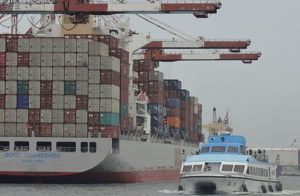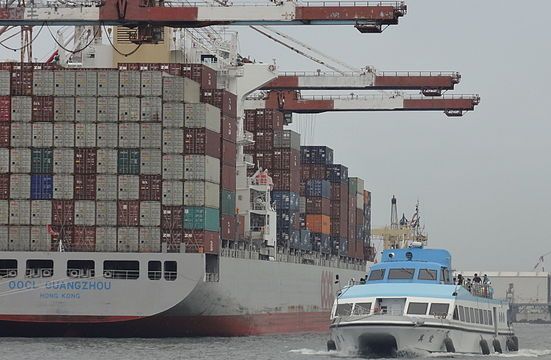 Orient Overseas (International) Limited (OOIL), parent group of ocean carrier Orient Overseas Container Line (OOCL), has swung to a net loss in the first half of 2016 from a profitable first six months last year, as cargo volume growth had been “uninspired.”
Orient Overseas (International) Limited (OOIL), parent group of ocean carrier Orient Overseas Container Line (OOCL), has swung to a net loss in the first half of 2016 from a profitable first six months last year, as cargo volume growth had been “uninspired.”
OOIL chairman C C Tung described the first semester of 2016 as disappointing as the Hong Kong-listed company suffered a group net loss of US$56.7 million in the six-month period ended June 30, 2016 compared to a profit of $238.6 million in the same period in 2015.
Group revenue from January to June 2016 amounted to $2.6 billion from $3.0 billion in the preceding year, while operating loss reached $19 million from a profit of $271 million in the comparative period.
For its liner business, OOCL liftings increased by 5% in the first half of this year and load factor by 1%, but revenue dropped by 17% to $2.2 billion from $2.7 billion.
“Average revenue levels in some trade lanes reached new post-Global Financial Crisis lows, with an average revenue per TEU drop of 21% in the first half,” said OOIL.
Tung cited weak economic growth in many key economies for its poor performance, noting constrained consumer demand as well as global uncertainty that has negatively influenced corporate and government investment.
“Consumer demand and investment are the key drivers of demand in our industry, and in this context it is no great surprise that cargo volume growth has been uninspiring,” said the official.
He added that the recent UK decision to exit the EU, violence in Europe, and geopolitical risks in the Middle East and South China Sea “have injected another layer of cautiousness to sustained corporate activities and investment.”
In addition to global economic uncertainty, the industry continues to face a supply and demand imbalance, he said. “A combination of weak global growth on the demand side and excessive shipping capacity growth, (exacerbated) by the industry’s relentless pursuit for scale and efficiency in recent years, has compounded the over capacity. The result is a weak freight market where rates fell to levels that at times failed to cover voyage costs in selected trade lanes.”
However, working for the industry is low fuel costs. Although higher now than in the first few months of 2016, fuel prices remain far lower than in recent years, providing some “element of cushion against the unsustainably low freight rates that have been seen in some trades,” added Tung.
In the first half of 2016, no newbuild vessels were delivered to the group and no new orders were placed. The six 20,000-TEU class newbuild vessels contracted with Samsung Heavy Industries Co. Ltd. in South Korea are expected to be completed by the end of year 2017.
Looking ahead, Tung said that despite some tonnage withdrawals and pockets of volume growth in selected trade lanes, “if deployed capacity continues to be substantially in excess of demand, the second half of 2016 will be challenging and difficult.”
He believes the industry will continue to face a supply and demand imbalance. “While the orderbook as a percentage of existing fleet is anticipated to drop to 6.7% and 5.5% respectively in 2017 and 2018, the challenge for the next half decade is on the demand side.”
The executive predicts a world economy that “seems uninspiring at best,” in which “the world may very well need to adjust to a ‘new normal’ where unexciting growth and a low interest environment become the norm, at least for a half decade.”
Meantime, the polarization of domestic politics, the rise of populism, and the tendency towards “turning inwards” for many nations may also translate into a slow down in the velocity of globalization, he declared.
Photo: Lonton2933





